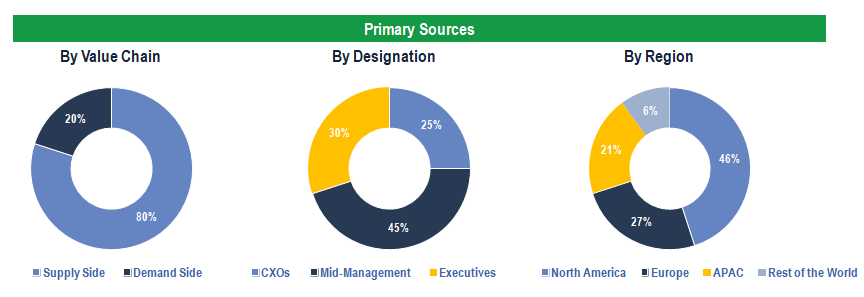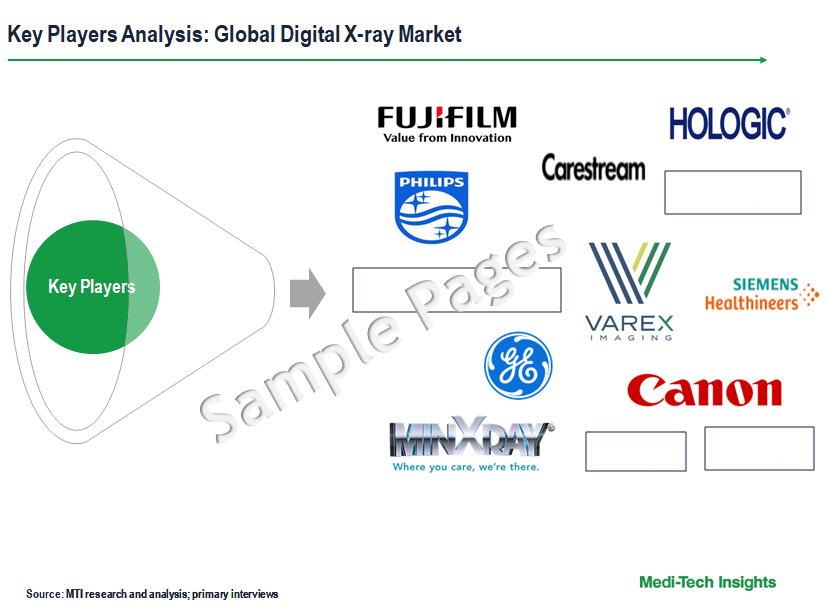
Digital X-Ray Market Size, Share, Trends, Demand, Growth & Applications 2026
The Global Digital X-ray Market is expected to grow at a rate of 8% by 2026. The rapid development in the AI-based digital X-ray systems, growing advantages of digital X-ray systems over conventional X-ray systems, increasing prevalence of orthopedics, dental, respiratory & other chronic diseases, increasing technological advancements in digital X-ray systems, and growing awareness regarding early diagnosis & diagnostic imaging are some of the key factors driving the global market growth.
A digital X-ray or digital radiography is an advanced form of X-ray inspection which produces a digital radiographic image instantly on a computer. The technique uses X-ray-sensitive plates to capture data during object examination, which is immediately transferred to a computer without the use of an intermediate cassette. The incident X-ray radiation is converted into an equivalent electric charge and then to a digital image through a digital detector sensor.
Compared to other imaging devices, flat panel detectors, also known as digital detector arrays (DDAs) provide high-quality digital images. They can have a better signal-to-noise ratio and improved dynamic range, which, in turn, provides high sensitivity for radiographic applications. Digital X-ray can be used for various applications such as cardiovascular, chest imaging, dental, mammography, and others.
Advantages Associated with Digital X-ray System Fuels Its Market Demand
The value of digital radiography in dental and medical diagnosis is well known, especially during operative procedures where time-to-image is very important. Key advantages associated with digital radiography over conventional radiography are:
- Reduction in radiation dose to the patient.
- Shorter exposure time.
- Real-time enhancement.
- Image optimization and computer-aided feature extraction.
- Avoids the use of chemicals for developing film.
- Environmental waste reduction.
- Digital image enhancement and image archiving.
- Higher productivity, workflow improvement.
- Portability.
- The increased dynamic range enables multiple thicknesses to be inspected in one shot.
- Speed, the results are available for review immediately.
- Improved electronic communications.
- Clarity, projecting a technologically advanced practice image.
Technological Advancement Drives the AI-Based Digital X-ray Systems Market
Artificial intelligence (AI) is one of the trending topics in medicine and especially radiology in recent years. Sometimes referred to as machine learning or deep learning, AI, can help in the optimization of radiologists' workflows, facilitate quantitative radiology, and assist in discovering genomic markers. Citing the lucrative prospects of AI-based Digital X-ray Systems, players operating in the market are constantly launching innovative products. For instance,
- In February 2022, Carestream Health announced that it's Smart Noise Cancellation(SNC) technology has received FDA 510(k) clearance for its dose reduction capability. The artificial intelligence (AI)-based feature allows a user to reduce the dose without loss of image quality.
- In February 2022, Mireye Inc. announced the launch of its intelligent imaging AI-based technology that automates the patient positioning process for X-ray examinations, eliminating the need for manual measurements and body part alignment.
- In August 2021, GE Healthcare entered into a strategic collaboration with Amazon Web Services (AWS) to deliver AI and cloud-based imaging solutions, integrated data, and clinical and operational insights to hospitals and healthcare providers.
- In June 2021, the government of India announced the launch of X-ray Setu, a free Artificial Intelligence(AI) based platform to help early intervention through rapid screening of COVID 19 with the help of Chest X-ray interpretation over WhatsApp for doctors who have access to X-ray machines.
“Radiology plays a critical role in diagnosing and guiding patients into the right treatment plans. Latest developments in AI-based technologies and smart connected imaging solutions help turn data into actionable insights. It also helps to increase diagnostic confidence and help improve clinical outcomes for patients.” -Chief Business Leader, Precision Diagnosis Company, United States
Key Constraints/Challenges: Digital X-ray Market
The higher initial cost of the system, hardware & software maintenance, infection control, the thickness and rigidity of the digital detectors, and the increased usage of refurbishment digital X-ray units due to budget constraints and are some of the key factors that are likely to restrain the market growth.
APAC Expected To Witness Strongest Growth in the Digital X-ray Market
North America currently holds a major share in the global digital X-ray market. It is expected to continue to hold a major share in the coming years due to the growing prevalence of chronic diseases, adoption of technologically advanced digital X-ray systems, growing awareness regarding preventive healthcare & screening programs, and an increasing number of diagnostic centers and hospitals in the region.
However, the pressure to diagnose many patients speedily and accurately in the APAC region is increasing, and radiology departments need to be able to effectively handle a high number of patients base. The Asia Pacific accounts for half of the world's population and will have nearly 5 billion people by 2050. At the same time, its rapidly aging population – 1 out of 4 people will be aged 60 years by 2050– will drive an increase in chronic medical conditions like cancer and cardiovascular diseases. There will be a strong need to image patients for faster diagnostic work while maintaining a high level of accuracy and a strong focus on patient safety. This in turn is expected to witness strong growth in the APAC region.
Competitive Landscape Analysis: Digital X-ray Market
Some of the key players operating in the digital X-ray market include Siemens Healthineers, Koninklijke Philips N.V., GE Healthcare, Canon Inc., Carestream Health, FUJIFILM Holdings Corporation, Shimadzu Corporation, Hologic Inc., Agfa-Gevaert Group, Samsung Medison, Konica Minolta, Shenzhen Mindray Bio-Medical Electronics Co., Varex Imaging Corporation, MinXray Inc., Hitachi Medical Corporation, and Toshiba Medical Systems Corporation, among others.
Organic and Inorganic Growth Strategies Adopted by Players to Establish Their Foothold in the Digital X-ray Market
Players operating in this market are adopting organic and inorganic growth strategies such as collaborations, acquisitions, and new product launches to garner market share. For instance,
- In March 2022, Canon Medical Systems Corporation announced the acquisition of Nordisk Røntgen Teknik A/S ("NRT"), a Danish company, with advanced technology for the development and manufacture of diagnostic X-ray systems.
- In October 2021, Siemens Healthineers announced the launch of its Luminos Impulse, a 2-in-1 remote-controlled imaging device that integrates fluoroscopy and radiography for improved clinical productivity and efficiency.
- In September 2021, GE Healthcare announced the introduction of a new fixed and overhead tube suspension (OTS) digital X-ray system called Definium Tempo which serves as a personal assistant to radiologists and technologists in reducing their workflow burdens.
The digital X-ray market is a growing market that is expected to gain further momentum in the coming years due to AI-based technological advancements, new product launches, favorable government initiatives, and aggressive organic and inorganic growth strategies followed by the players.
Key Strategic Questions Addressed
- What is the market size & forecast for the Digital X-ray Market?
- What are the historical, present, and forecasted market shares and growth rates of various segments and sub-segments of the Digital X-ray Market?
- How has Covid-19 impacted the Digital X-ray Market?
- What are the major growth drivers, restraints/challenges impacting the market?
- What are the opportunities prevailing in the Digital X-ray market?
- What is the investment landscape of Digital X-ray Market?
- Which region has the highest share in the global market? Which region is expected to witness the highest growth rate in the next 5 years?
- Who are the major players operating in the market? What is the competitive positioning of key players?
- Who are the new players entering the Digital X-ray market?
- What are the key strategies adopted by players operating in Digital X-ray Market?
The study has been compiled based on the extensive primary and secondary research.
Secondary Research (Indicative List)

Primary Research
To validate research findings (market size & forecasts, market segmentation, market dynamics, competitive landscape, key industry trends, etc.), extensive primary interviews were conducted with both supply and demand side stakeholders.
Supply Side Stakeholders:
- Senior Management Level: CEOs, Presidents, Vice-Presidents, Directors, Chief Technology Officers, Chief Commercial Officers
- Mid-Management Level: Product Managers, Sales Managers, Brand Managers, R&D Managers, Business Development Managers, Consultants
Demand Side Stakeholders:
- Stakeholders in Hospitals, Diagnostics Centre, Dental Care Centers, and Other End Users.
Breakdown of Primary Interviews

Market Size Estimation
Both ‘Top-Down and Bottom-Up Approaches’ were used to derive market size estimates and forecasts.
Data Triangulation
Research findings derived through secondary sources & internal analysis were validated with Primary Interviews, Internal Knowledge Repository, and Company Sales Data.



